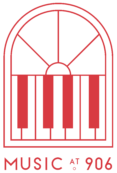How I Teach
What makes
music at 906 a unique studio?
Piano teachers are mostly unified in what is most important to us– to help students become independent musicians and to foster a love of music and creativity that they will have for the rest of their lives. What makes my studio different is how I get students there.

three main skills I Help students develop:
1. To play songs they hear on the radio or other media without needing to look for or look at sheet music.
2. To improvise/ compose their own music at any time and place with confidence and comprehension.
3. To read and perform music using notation at any level with confidence and comprehension so that they can eventually learn music on their own in any medium (classical music, pop music, jazz music, musical theatre, etc.)
How we develop these skills
1. Aural Pattern Recognition and Comprehension: Music is made up of patterns, much like our speaking language! The more we sing and chant familiar patterns, the easier it will be to hear and pick out these patterns in songs we listen to and learn!
What we do in lessons: We have “floor time” every week during lessons, regardless of level and ability. We sing patterns, chant rhythms, do movement activities to develop motor skills, and sing folk songs. These activities get progressively more advanced the longer a student progresses.

2. Motor Skill Development: Playing the piano is a complex motor skill! Believe it or not, the brain needs time to learn how to use our arms and hands in special ways to be able to play the piano. This can take many years to develop!
What we do in lessons: We do activities both at and away from the piano to develop healthy piano-playing habits. We focus on tuning into specific muscle movement and finger joint stability over many years as a student gets older. We also play and create songs that specifically help develop these skills.

3. Improvisation and Composition: Being able to create your own music is SO important in order to become an independent music maker! We use the patterns we sing and chant away from the piano and use them make up short songs at the piano. Students will not only eventually be able to create music on the spot (improvise), they will be able to compose their own music and write it down so that they can save it for years to come and share their music with others! These activities happen from the very first lesson, and get more complex as a student gets older.
What we do in lessons: After a student learns a piece in their curriculum, we create medleys or “mashups” of the short songs they learn during lessons. We also change how we play the song! Can we play it backwards? Higher? Lower? With different piano keys? The possibilities are endless! As a student progresses, there will be added weekly assignments that focus on using the familiar patterns they’ve learned through floor time and learned pieces to create their own original ideas.

4. Playing by Ear: Sometimes, a student will want to learn to play a song they love to sing on the radio, or a folk song that they’ve heard at school. We start finding familiar patterns in the song that we may have song or chanted before! The more advanced the student is, the more parts of the song they can learn (bass line, chords and melody line, etc.).

5. Visual Comprehension of Notation: This is where I differ from other methods of teaching. I believe it is more important for students to develop their aural recognition of musical patterns than it is to begin reading music notation during the first few years of piano lessons. Much like how a child learns to read, they must first be able to fluently speak and have conversations in their native language.
What we do in lessons: After about 3-4 years of being introduced to various patterns and sounds, creating their own short pieces, and learning repertoire by rote and ear, I begin to show students what these patterns look like on paper. We will take lots of time recognizing common written combinations of notes and rhythms and then put them in the context of repertoire. This happens over the course of many months, and students will be given repertoire to learn by notation that fits their level of reading while also learning repertoire that matches their level of aural recognition (which may be way more advanced). After some time, their reading will match their listening levels!

6. Performance of Repertoire: At every stage of learning, students will be given pieces that match their aural recognition and motor skill development in order to engrain skills and hear patterns we’ve sung and chanted in context! Students will initially learn repertoire by rote (I show them how to play the piece) and point out familiar patterns and motor coordination. More advanced students (depending on readiness) will begin to learn music by reading notation.

